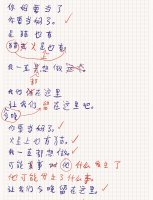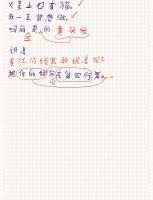Shun
状元
Dear all, dear @leguan,
I've just had a promising idea for a new way of learning sentence structure using Pleco Flashcards and the Tatoeba sentences. It reminds me of similar questions in IQ tests. The game is simple:
You are shown a sentence in your language and the corresponding Chinese sentence with its characters in random order. Your task is to figure out the correct order, that is, the sentence in the headword. (Self-graded test)
I'll program it using Python soon. Expect the flashcards soon.
Best,
Shun
I've just had a promising idea for a new way of learning sentence structure using Pleco Flashcards and the Tatoeba sentences. It reminds me of similar questions in IQ tests. The game is simple:
You are shown a sentence in your language and the corresponding Chinese sentence with its characters in random order. Your task is to figure out the correct order, that is, the sentence in the headword. (Self-graded test)
I'll program it using Python soon. Expect the flashcards soon.
Best,
Shun



